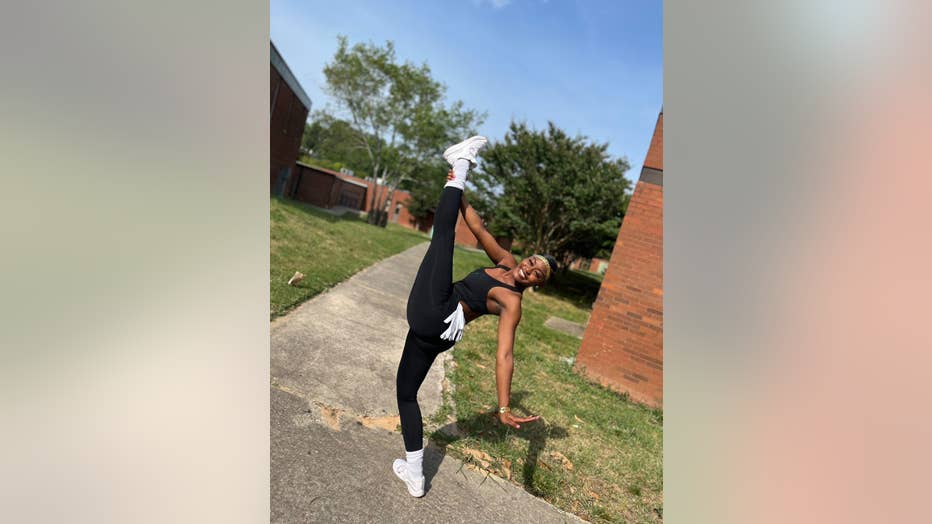Georgia teen uses dance to cope with vision-altering autoimmune disorder
Georgia teen copes with juvenile arthritis with expressive dance
Kimora Barker has juvenile arthritis. It affects Kimora in ways you may not expect.
Atlanta - Kimora Barker feels like she was born to dance.
"Speaking through it, that's that I like to do I like to speak through my dancing," Barker says. "It helps me not only express things, but, yeah, it helps a lot."
It's helping the Morrow
16-year-old cope with a disease you do not hear a lot about in children: juvenile arthritis.

Kimora Barker, 16, uses dance to cope with living with an autoimmune disorder known as juvenile idiopathic arthritis. (Shaveda Long)
"She is so strong," Shaveda Long, her mother, says. "When I say strong, she is tough as nails."
Long says they noticed something was wrong when Kimora was about 10-months old.
"My aunt called me from work, and said, 'The baby won't stand up; she is not crying, but her ankles are purple, and she won't stand up,'" Long said. "I took her to the emergency room, and the doctors said something about arthritis. I'm like, 'Arthritis is for old people.'"
GEORGIA NEWLYWED SAYS HE ALMOST OVERLOOKED CANCER SYMPTOMS
The doctors explained Kimora has juvenile idiopathic arthritis, a form of rheumatoid arthritis found in children age 16 and under.
Registered nurse Jennifer Speed is part the team treating Barker at Children's Healthcare of Atlanta.
"JIA is an autoimmune disease," Speed says. "So, that means the immune system is attacking its own tissue and its own body."
Speed says kids with JIA typically experience joint pain, swelling and stiffness.
"With my condition, mine affects my eyes," Kimora Barker says. It doesn't personally affect my joints as much."

Kimora Barker, 16, has grown up with juvenile arthritis. (Shaveda Long)
She has inflammation in both eyes, and takes methotrexate, a medication to damp down her immune system, and keep it from further damaging her vision.
She has been on the medication since she was a toddler.
"Your immune system is fighting itself," her mother says. "Your immune system cannot fight itself because there is nothing there but the body. So, you have to give your baby something to suppress the very thing that is supposed to keep them safe in life."
But the medication, which Barker will take for life, is helping.
"Left untreated, these patients can actually lose their vision completely," Jennifer Speed says.
Barker's vision is limited.
She has undergone surgery to removed cataracts from both eyes, but she could not get artificial lenses to replace her clouded ones because of the inflammation in her eyes.
So, Barker wears contacts and glasses, sometimes both at the same time.
When she removes her contact, everything goes blurry.
"It's like putting Vaseline on a camera," Barker says. "You can't see anything in color, and nothing is defined."
That can make balancing and following her dance team much more challenging at times.
If her vision gets thrown off, Kimora Barker just keeps dancing, pushing through life with a condition she believes has made her stronger.
"It makes me who I am, and I feel like if I didn't have it, I would be a different person," Barker says. "So, I feel like it's a part of me."

